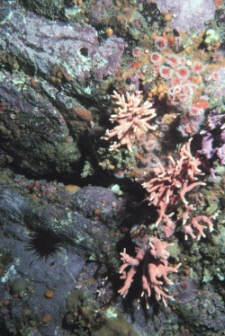THE OCEAN EDUCATION PROJECT
To Inform And Inspire
BACKGROUND
The idea of establishing marine protected areas is not a new one. In 1909 President Theodore Roosevelt issued an Executive Order that established what became known as the Northwestern Hawaiian Islands National Wildlife Refuge. Unfortunately, the protections insured by that designation remained undefined and ecosystem degradation continued. Today, for example, in California, even though there are many areas called "marine preserves" or "marine sanctuaries", less than one quarter of one percent of their combined area is completely protected from fishing and other forms of exploitation (mining, oil extraction). Areas that can truly be called "marine reserves" are only those in which no extractive use of any kind and no exploitive, disruptive or destructive activities are allowed. But, surprisingly, this concept is very controversial and many still question why such strictly protected marine reserves are needed.
 Although no one is claiming that all MPAs must fit this "hands off" definition to be effective, or that this would even be desirable, the preponderance of evidence indicates that certain places in the ocean act as "biomass production engines" that are responsible for spawning and incubation of the majority of ocean plant and animal species. In addition, the evidence shows that fishing reduces not only the number of fish, but also their average size and reproductive capacity. The loss of these key areas and the key linkages between such areas is so critical to the oceans regenerative capabilities, that not protecting them risks the viability of the entire ocean ecosystem and the global food chain. So long as the restrictions placed on reserves and their size and locations are designed to accommodate the regenerative dynamics of the ecosystems and species they seek to protect, a high degree of success is achievable. An ecosystem based approach to analysis and resource management is essential.
Although no one is claiming that all MPAs must fit this "hands off" definition to be effective, or that this would even be desirable, the preponderance of evidence indicates that certain places in the ocean act as "biomass production engines" that are responsible for spawning and incubation of the majority of ocean plant and animal species. In addition, the evidence shows that fishing reduces not only the number of fish, but also their average size and reproductive capacity. The loss of these key areas and the key linkages between such areas is so critical to the oceans regenerative capabilities, that not protecting them risks the viability of the entire ocean ecosystem and the global food chain. So long as the restrictions placed on reserves and their size and locations are designed to accommodate the regenerative dynamics of the ecosystems and species they seek to protect, a high degree of success is achievable. An ecosystem based approach to analysis and resource management is essential.
Ecosystems are more than the sum of their parts, more than a list of species. Unless management decisions are made using an ecosystem based approach, the unintended consequences can often be worse than the problems they set out to solve. For example, removing a top predator (a keystone species) in an ecosystem can have dramatic ripple effects, altering the abundance of hundreds of other species of plants and animals that might be important, for instance, to maintaining the overall health of a kelp forest or a coral reef. This might, in turn, alter the impact of man-made pollution on algae growth, reducing oxygen concentrations and creating dead zones that kill bottom invertebrates or force more mobile animals to forage in concentrated areas, depleting food supplies. No link in the chain is unimportant. Its been proposed, for example, that the abundance of filter feeders (clams, muscles and oysters) in Chesapeake Bay during the nineteenth century was responsible for keeping the ecosystem productive even though it was heavily polluted by terrestrial nutrient runoff.
The good news is that the result of decades of study of existing MPAs indicates, overwhelmingly, that even heavily exploited species can recover within reserve boundaries, becoming more numerous and larger. And annual catches outside protected areas also improve dramatically. Solutions available to us today have been proven to work effectively. We need only to have the will to chose to employ them, but we must do so soon. To quote again from the Pew Oceans Commission reports, "If we are serious about saving our fisheries and protecting the seas biodiversity, then we need to make swift and perhaps painful decisions without the luxury of perfect knowledge." (Marine Reserves; Pew Oceans Commission; 2003).